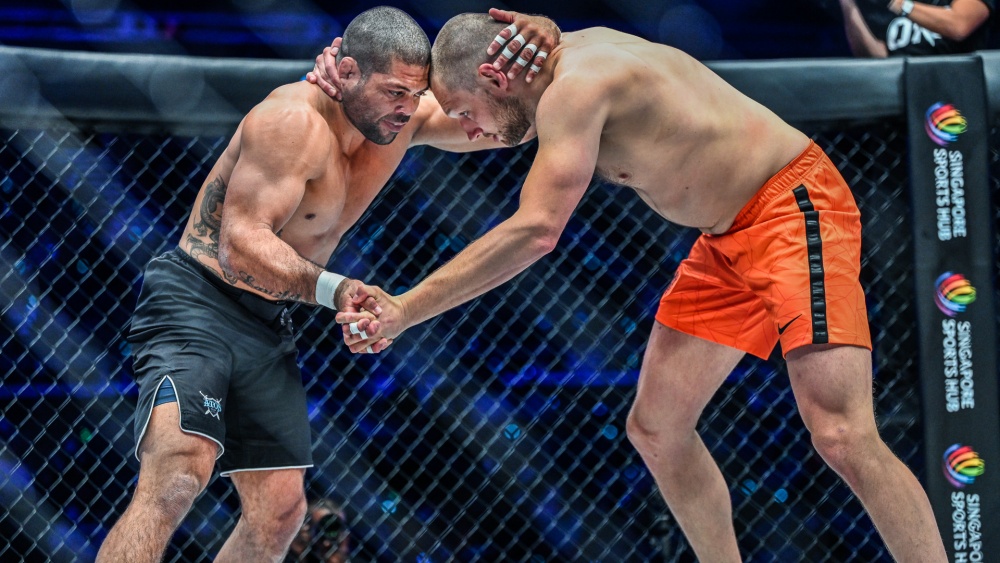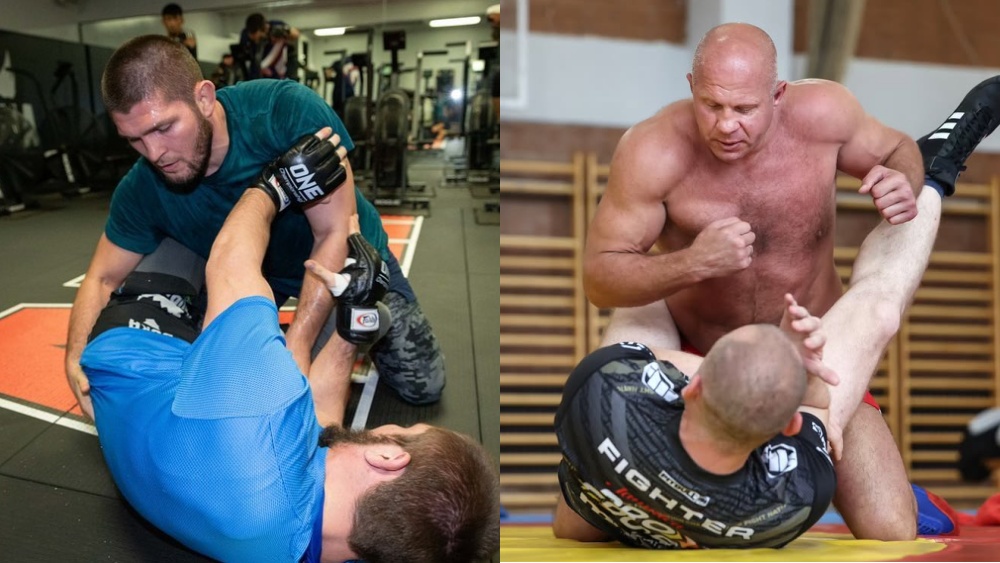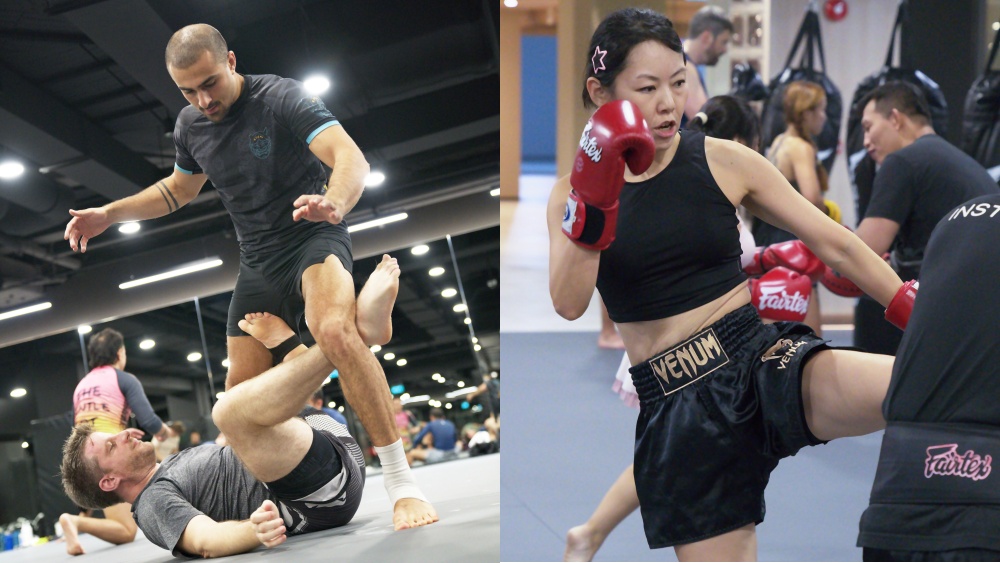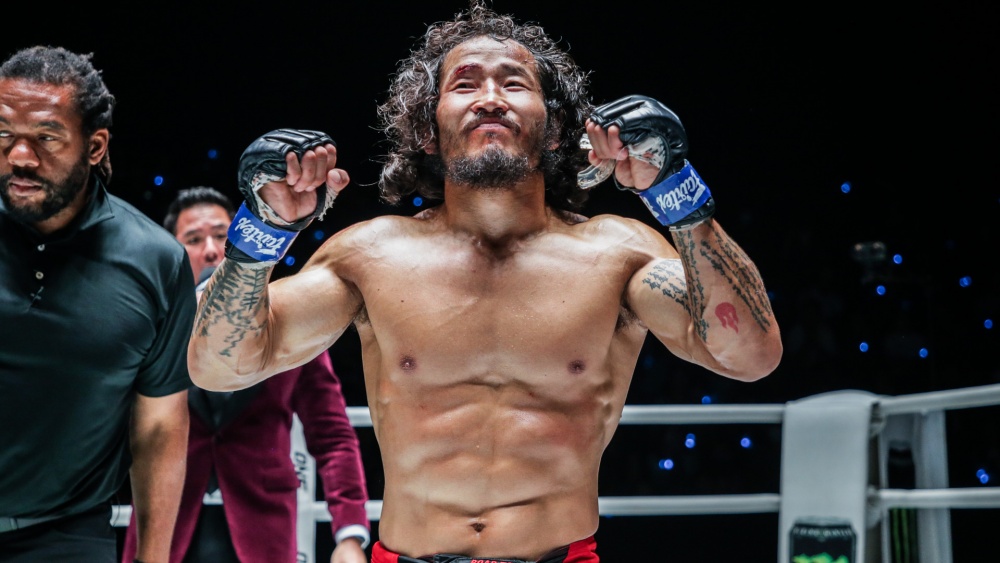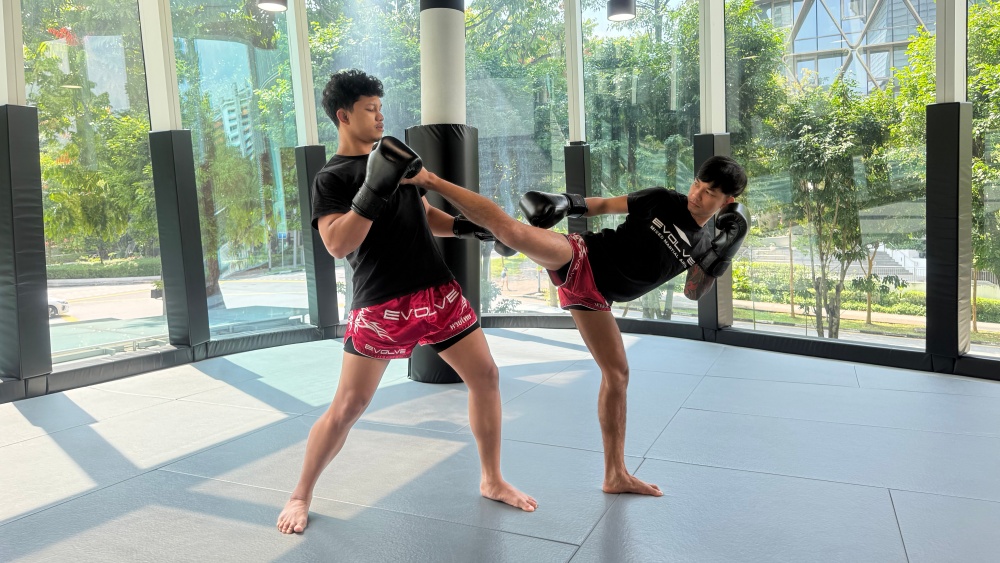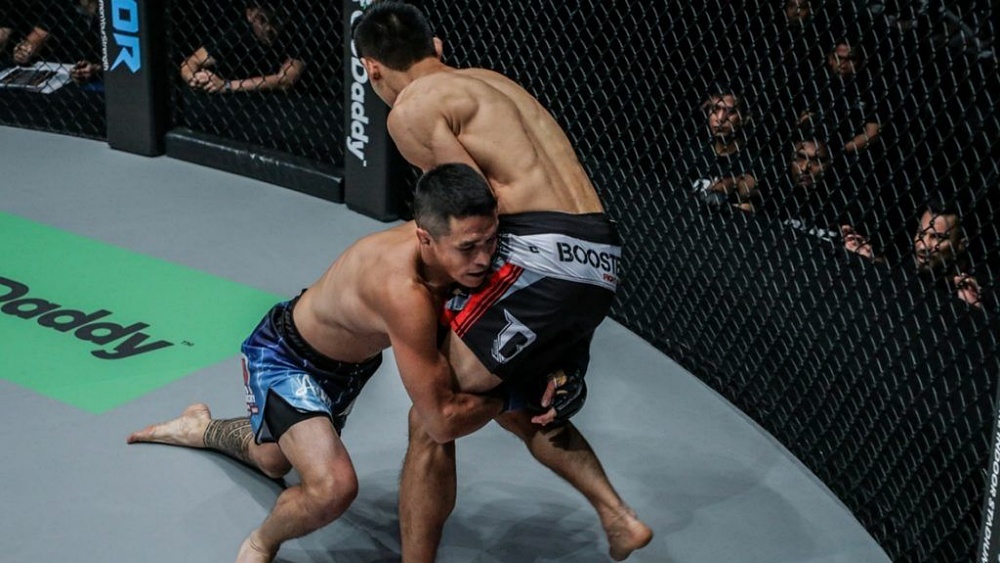Standup grappling is an integral part of the overall skill set needed to be successful in MMA. Regardless of your individual style, you need a base proficiency in standup grappling to enforce your game plan during a fight. Grapplers need standup grappling to get their opponent to the ground, while strikers use it to keep the fight standing. Today, Evolve Daily is pleased to share a guide on ten drills to level up your standup grappling in MMA.
1) Hand Fighting
Hand Fighting can take place from boxing range; being able to secure grips will establish control and force your opponent into fighting at your pace.
This first drill called the chop and pop, is useful when your opponent is posting on your shoulders, preventing you from initiating your takedowns. In this example, your opponent starts by posting on your left shoulder with their right arm.
Take your left hand and chop down on your opponent’s posting arm, near their wrist. This will push their arm off of your shoulder; use your right hand to grab your opponent’s right tricep as you chop down on their wrist.
From here, you simply arm drag and step to your left. You can go for a single leg, take your opponent’s back, or use the angle to set up a sneaky counterstrike. Watch the video above as Coach Brian and Jaden Abas demonstrate this drill.
2) Dagestani Drag
This next drill showcases an effective way to take someone down without dropping to your knees, and can be done in sequence with the hand fighting drill discussed above.
Once you arm drag your opponent, connect the front of your shoulder to the back of theirs, wrapping your free hand around their waist. Be sure to hold on to your opponent’s tricep after you arm drag to control their posture!
From this position, you control their center of gravity and one of their arms! You can drag them to the floor easily by pulling them with your own body weight.
3) Pummeling
Pummeling is a basic, but important, drill for acclimating your body to wrestling from a 50/50 position. Pummeling has you and your opponent facing each other, chest to chest. Both you and your opponent have one underhook and one overhook, on opposing sides. You both “swim” your overhook arm under your opponents underhook, securing an underhook yourself. This is a perfect drill for warming up and also before sparring to acclimate to contact. Watch Coach Brian of Peterson Grapplers explain Pummeling in the video above.
4) Russian Tie
The Russian Tie, also known as the two on one, is a quintessential standup wrestling technique. The Russian Tie can help you deal with an opponent that is physically stronger. The concept is to use both of your arms and get to one side, creating a situation where they are not able to effectively use one hand, while the other is trapped and controlled.
One common setup for the Russian Tie is off of an opponent’s collar tie. For example, if your opponent uses their right arm to secure a collar tie on you, there is an opening for you to secure a Russian Tie on that arm.
Use your own right arm to reach across your body and grab your opponent’s wrist. Turn your body clockwise and drive your shoulder into your opponent’s arm while using your left arm to grab underneath your opponent’s right tricep. Once you fully turn clockwise, you should end up in a position where your left arm goes under your opponent’s arm, while your right arm goes over. Watch Coach Brian explain the Russian Tie in the video above!
5) Punching Before Takedowns
Throwing punches then shooting a takedown can make your opponent more hesitant, even if you miss! The threat of boxing and grappling is a potent combination, especially combined with the concepts discussed above!
This drill has one person defending, while the other throws a boxing combination, followed by a single leg takedown. The combination is a double jab to a rear overhand. This sequence of punches gets your opponent to raise their guard or risk being hit with a powerful overhand. In doing so, they expose their body and legs.
As you throw your rear overhand, shift your weight to your lead side, while stepping forwards with your rear leg. You should end up in a southpaw stance, your opponents lead leg directly between your own.
Secure a grip on their lead leg and you have a very high percentage takedown option from boxing range. If you prefer to keep the fight standing, you can throw your opponent down and get back on your feet. Grapplers can use this same technique to get a striker on the ground, making it a versatile tool for any fighter.
6) Grappling Systems
Individual techniques are nothing without a cohesive system. A system has a goal, whether it be to take the back or double leg your opponent. Without a system, you don’t have a consistent, reliable way to use your grappling techniques.
Over time, and through sparring, you will make your own system. Everyone has different strengths and predispositions, which form our individual styles.
Until that time comes, it can be helpful to emulate a different system, whether it’s based on your favorite fighter or a traditional martial art.
One system that is simple, but effective is that of Bo Nickal. He combines basic grappling movements into a sequence, with offshoots that reflect his opponents potential reactions.
The first part of his system involves you securing a collar tie and inside control. You use this position to jerk your opponent around once or twice, using the third repetition to secure a single leg.
Be sure to start the single leg takedown when you are toe to toe with your opponent, this will create the highest chance of success. It is also important to note that the inside tie should be the same side as the leg that you are targeting. The video above features Bo Nickal himself teaching his system.
Conclusion
The drills discussed above will help take your standup grappling to the next level. Be sure to mix in striking as you drill standup MMA grappling; this will create a more realistic training environment. Let us know which drill elevates your game the most!
You may also like:
MMA And Digital Detox: Using Martial Arts Training To Disconnect And Reconnect
